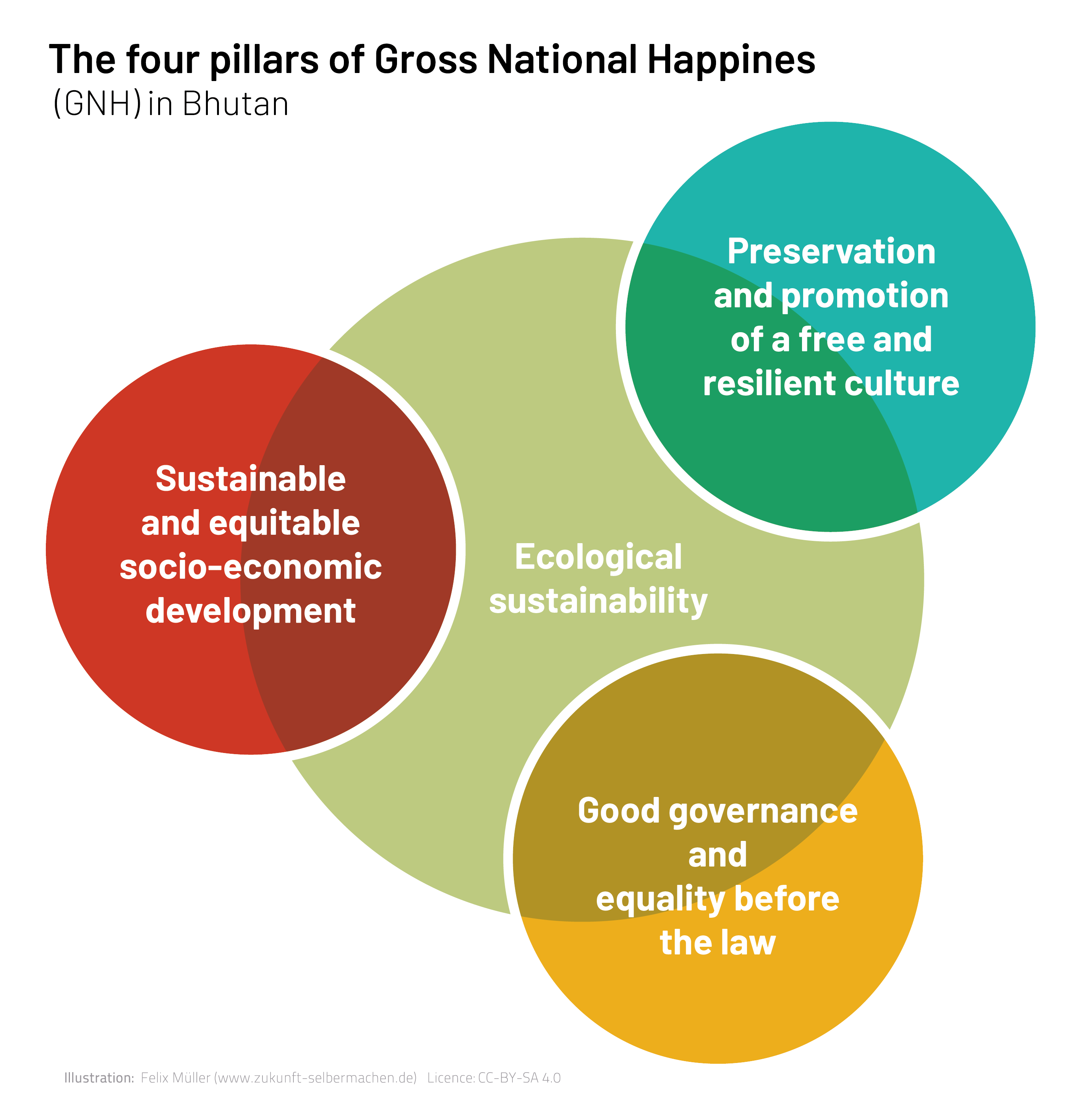Gross National Happiness


The pioneer of the Wellbeing Economy movement was the country of Bhutan, which in seeing the failures of GDP as the sole indicator of development, created a Gross National Happiness index to gauge the wellbeing of its citizens. Gross National Happiness (GNH) is inspired by the Buddhist concept of “The Middle Path” and seeks to balance multiple goals. The term is defined as “a multidimensional development approach seeking to achieve a harmonious balance between material wellbeing and the spiritual, emotional and cultural needs of society.”
As a development philosophy, GNH was fleshed out in 1998, in a document outlining the government’s vision for the next twenty years of development. They envisioned an alternative approach to development which:
“…achieves a balance between the spiritual and material aspects of life, between peljor gomphel (economic development) and gakid (happiness and peace). When tensions were observed between them, we have deliberately chosen to give preference to happiness and peace, even at the expense of economic growth, which we have regarded not as an end in itself, but as a means to achieve improvements in the well-being and welfare of the people.”
Bhutan proposes GNH as an alternative indicator for GDP to measure progress or development. Bhutan introduced their concept of ‘Gross National Happiness’ (GNH) in 2008 to track domains such as health, education, good governance, ecological diversity and community vitality.


